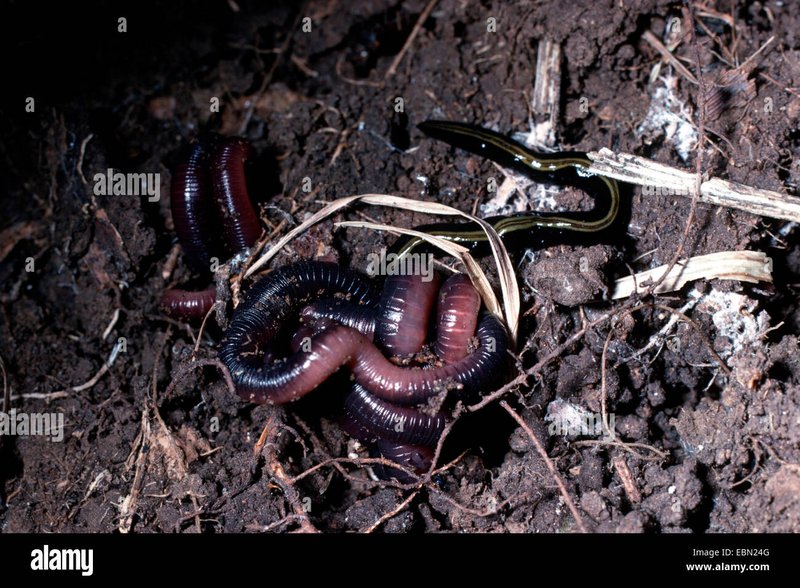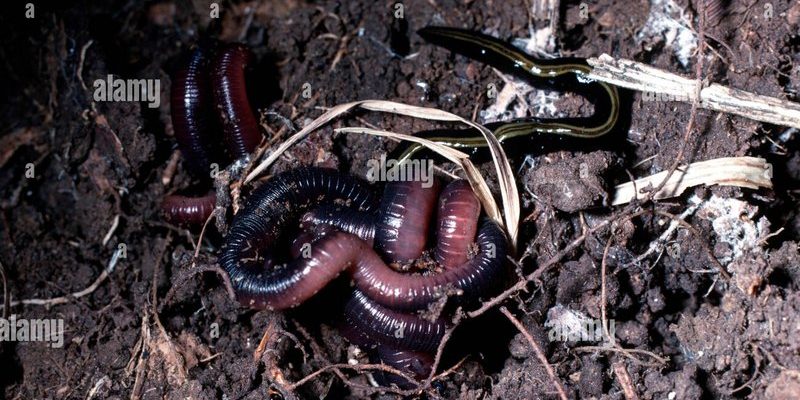
Understanding the reproduction of the Giant Gippsland earthworm is like watching a magic show unfold. Each stage—from mating to the emergence of tiny larvae—is filled with wonder and highlights the intricate connections between nature and survival. If you’re curious about how these earthworms manage to keep their species going, you’re in for a treat. Let’s dig deep into their mating rituals, egg-laying practices, and the fascinating journey from eggs to larvae.
Mating Rituals of the Giant Gippsland Earthworm
The mating process of the Giant Gippsland earthworm is as extraordinary as the worm itself. These earthworms are hermaphrodites, which means each individual has both male and female reproductive organs. You might be wondering how that works, right? Well, it’s a bit like having two sides of the coin, allowing them to mate with any partner they encounter.
During the mating season, which typically occurs in the cooler months, these worms will come to the surface and look for each other. They release a mucous secretion to help attract a mate. When two Giant Gippsland earthworms find each other, they align themselves and exchange sperm. This process can be quite a sight—like a dance in the dirt—where they wrap around each other for hours!
After this intimate meeting, each worm uses the stored sperm to fertilize their eggs later on. Reproduction in the earthworm world isn’t just about instinct; it’s a meticulous process that involves timing and careful selection of partners. Isn’t that amazing to think about?
Egg-Laying Process
Once the mating is complete, it’s time for the Giant Gippsland earthworms to get serious about the next generation. The fertilized eggs are laid in a special casing known as a cocoon. This cocoon is made of a protein-rich mucous that the earthworm secretes. You can think of it as a little protective pouch for the developing eggs, much like a cozy blanket.
Typically, the female will deposit these cocoons in the soil, often in moist, nutrient-rich areas. This is important because the quality of the environment directly affects the survival of the young earthworms. Each cocoon contains anywhere from one to several eggs, and the size can vary—some can be as small as a marble!
It usually takes about six months for the eggs to hatch. The careful placement of these cocoons ensures that the newborn earthworms have the right conditions to thrive. Here’s a fun fact: the Giant Gippsland earthworm can live for a long time—up to 15 years—which gives them plenty of opportunities to mate and lay eggs throughout their lives.
The Development of Larvae
When the time is right, the baby earthworms—known as larvae—emerge from their cocoons. This stage is nothing short of miraculous. Each larvae is tiny, measuring only a few centimeters long, and it often looks quite different from its adult counterpart. Instead of the robust and hefty size of a mature Giant Gippsland earthworm, these little ones are thin and delicate.
As larvae, they begin their journey by burrowing into the soil to find food. They primarily feed on decaying organic matter, which is crucial for their growth. You can think of this as their version of a nutritious diet! Over time, as they consume nutrients and gain strength, they begin to grow and develop the traits that define the Giant Gippsland earthworm.
It’s also worth noting that the survival rate for these tiny larvae is influenced by factors such as moisture, temperature, and the presence of predators. This makes their early days quite challenging, but those that make it through can grow into the giants we admire later on.
Environmental Challenges to Reproduction
Even though Giant Gippsland earthworms are remarkable creatures, their reproduction and survival are threatened by various environmental factors. One of the biggest challenges is habitat loss. As humans develop land for agriculture and urbanization, the natural environment of these worms is shrinking, leaving them with fewer places to burrow and breed.
Climate change also poses a serious risk. Changes in rainfall patterns and increasing temperatures can lead to drier soil conditions, making it difficult for worms to survive. Without sufficient moisture, both the earthworms and their delicate eggs and larvae can suffer.
In addition, pollution and chemicals used in farming can contaminate the soil, impacting the food supply available for young earthworms. This makes it important to understand and protect the delicate ecosystems where these fascinating creatures live.
Conservation Efforts
Recognizing the importance of the Giant Gippsland earthworm, conservation efforts are underway to help protect both the species and its habitat. Various organizations are working to educate the public about this unique worm and the ecological roles it plays in soil health.
One key strategy involves restoring habitats that have been damaged by agricultural practices. This includes planting native vegetation and reducing chemical use, which helps recreate a healthier environment for earthworms. Additionally, environmental scientists are conducting studies to monitor earthworm populations and their reproductive habits, ensuring that we have the information needed for effective conservation.
Community involvement is also essential. Local volunteers can participate in clean-up initiatives and habitat restoration projects, which not only benefit the Giant Gippsland earthworm but the entire ecosystem.
The Importance of the Giant Gippsland Earthworm
So, why should we care about the Giant Gippsland earthworm? Well, these incredible creatures play an important role in maintaining soil health. They help break down organic matter and aerate the soil, which in turn benefits plants and other living organisms in the ecosystem.
Moreover, their unique reproductive process showcases a fascinating adaptation to survival in their specific environment. By understanding how they reproduce and thrive, we can appreciate the interconnectedness of nature.
In summary, the Giant Gippsland earthworm’s reproduction–from mating and egg-laying to larvae development–is a beautiful cycle of life that reminds us of the wonders of nature. Protecting them is in our hands, and by taking action, we can ensure that these amazing earthworms continue to thrive for generations to come.
In closing, whether you’re an earthworm enthusiast or just someone who stumbled across this article, I hope you’ve found a new appreciation for the Giant Gippsland earthworm. Their simple yet intricate life cycle is a testament to the beauty and complexity of our natural world. So next time you think of earthworms, remember this giant and the important role it plays beneath our feet.

